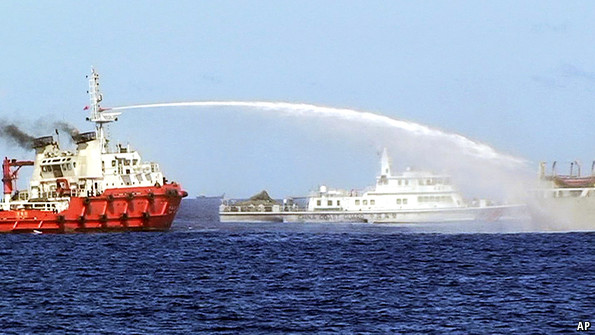FAR EAST: Disputes continue in the South China Sea
The precarious situation in the South China Sea is far from being solved. All countries tend to declare their desire to avoid conflict, but the actions that they undergo contradict their formal declarations. First it was the extension of China’s Air Defense Identification Zone, move that created outrage between the other Asian countries that had interests in the South China Sea. The situation got worst in May this year, when China did it again. After the Senkaku/Diaoyu islands and the tensions created not only with Japan, but with the entire world, the new interest of China are the Paracels and Spratlys islands, islands upon which a numerous countries pretend to have claims.
China claims that this particular area pertains to its territory, due to hundreds of years of history is regarded as a part of China. Vietnam claims that since now they have administrated these islands and also they are confident that China has no right over the islands. The Philippines is the other important actor that believes the islands are part of its territory due to the geographical location. Other involved actors that claim territories in the South China Sea, not necessary these particular islands, but other areas claimed by China are Malaysia and Brunei.
The area is full of natural resources both on land and in the neighboring waters, given the location of this territory and presence of oil. Conflict arose before between China and Vietnam because of this particular area, so the risk of crisis escalation is present and pressing for all the parties involved. As mentioned before, the tensions grew this May when China sent a drilling rig into the waters from the proximity of the discussed islands and Vietnam and the Philippines stopped being quite. Several collisions took place between Chinese and Vietnamese ships and for the moment, according to BBC, all the other countries except for China want international mediation.
After China sent the drill in the region, Vietnam demanded that it be withdrawn from the area and sent vessels to demonstrate resistance in the case in which China will not comply with its demands. China’s response was a violent one and tensions grew even deeper. China claims that this area is part of Chinese territory and it refuses to extract the drill from its current location. In the end, China is claiming sovereignty over most of South China Sea and what is important to keep in mind is that the arguments brought up by Chinese officials appear all hazy and hard to demonstrate.
Another attempt was made in the last month to, according to The Diplomat, to make relations better between the Asian states concentrated in this area, but it proved to be unsuccessful. Several officials met in Bali to discuss the current situation and to try to find alternative dispute resolution methods. Before the meeting, China’s officials declared that they are firm that China acted in good faith and in accordance of the law and that it is threatened by Vietnam and the Philippines. This means that there is no space for negotiation and due to the most recent courses of action the countries are alert from a military point of view. Officials are concerned about a possible deployment of further drilling rigs in the area, action which could damage the existing situation even worse.
SOURCES:
http://thediplomat.com/2014/06/china-lets-its-oil-rigs-do-the-talking/
http://www.bbc.com/news/world-asia-pacific-13748349
http://www.reuters.com/article/2014/06/21/us-southchinasea-china-idUSKBN0EW07L20140621
















